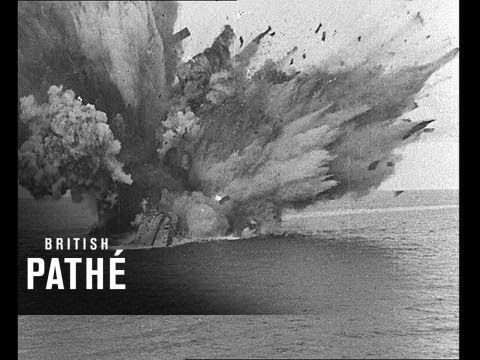HMS Barham was a Queen Elizabeth-class battleship built for the Royal Navy during the early 1910s. Often used as a flagship, she participated in the Battle of Jutland during the First World War as part of the Grand Fleet. Other than that battle, and the inconclusive Action of 19 August 1916, her service during the war generally consisted of routine patrols and training in the North Sea.
During the 1920s and 1930s, the ship was assigned to the Atlantic, Mediterranean, and Home Fleets. Barham played a minor role in quelling the 1929 Palestine riots and the 1936–39 Arab revolt in Palestine. The ship was in the Mediterranean when the Second World War began in September 1939 and accidentally collided with and sank one of her escorting destroyerson her voyage home three months later. She participated in the Battle of Dakar in mid-1940 where she damaged a Vichy French battleship and was slightly damaged in return. Barhamwas then transferred to the Mediterranean Fleet where she covered multiple Malta Convoys. She helped to sink an Italian heavy cruiser and a destroyer during the Battle of Cape Matapanin March 1941 and was damaged by German aircraft two months later during the evacuation of Crete.

On the afternoon of 24 November, the 1st BS, Barham, Queen Elizabeth, and Valiant, with an escort of eight destroyers, departed Alexandria to cover the 7th and 15th Cruiser Squadrons as they hunted for Italian convoys in the Central Mediterranean. The following morning, the German submarine U-331, commanded by Oberleutnant zur See Hans-Diedrich von Tiesenhausen, detected the faint engine noises of the British ships and moved to intercept. By the afternoon the submarine and the 1st BS were on reciprocal courses and von Tiesenhausen ordered his boat to battle stationsaround 16:00. An ASDIC operator aboard one of the leading destroyers, Jervis, detected the submarine at 16:18 at an estimated range of 900–1,100 yards (820–1,010 m), but the contact was disregarded as it subtended an angle between 40 to 60 degrees wide, far larger than a submarine. U-331 thus passed through the screen and was only in a position to fire her torpedoes after the leading ship, Queen Elizabeth, had passed her by and the second ship, Barham, was closing rapidly. Von Tiesenhausen ordered all four bow torpedo tubes fired at a range of 375 metres (410 yd) at 16:25. Possibly due to her closeness to Valiant‘s bow wave and discharging the torpedoes, the boat’s conning tower broached the surface and was fruitlessly engaged by one of the battleship’s “pom-pom”s at a range of about 30 yards (27 m). The boat dived out of control after she broached, reaching an indicated depth of 265 metres (869 ft), well below her design depth of 150 metres (490 ft), before she stabilized without any damage. U-331 was not attacked by the escorting destroyers and reached port on 3 December. Von Tiesenhausen was not certain of the results of his attack and radioed that he had hit a Queen Elizabeth-class battleship with one torpedo.
There was no time for evasive action, and three of the four torpedoes struck amidships so closely together as to throw up a single massive water column. Barham quickly capsized to port and was lying on her side when a massive magazine explosion occurred aft about four minutes after she was torpedoed and sank her. The Court of Enquiry into the sinking ascribed the final magazine explosion to a fire in the 4-inch magazines outboard of the main 15-inch magazines, which would have then spread to and detonated the contents of the main magazines.Due to the speed at which she sank, 862 officers and ratings were killed,including two who died of their wounds after being rescued. The destroyer Hotspur rescued some 337 survivors, including Vice-Admiral Henry Pridham-Wippell and the pair who later died of their wounds, while the Australian destroyer Nizam reportedly rescued some 150 men.The sinking was captured on film by a cameraman from Pathé News, aboard Valiant.
